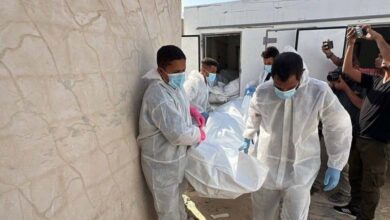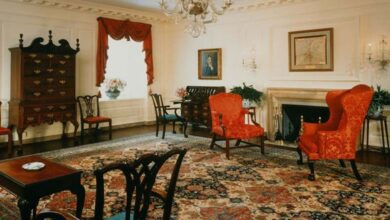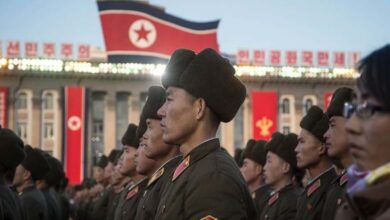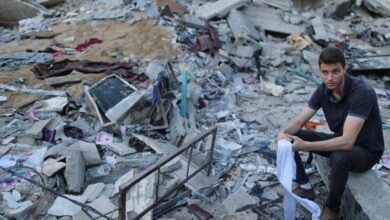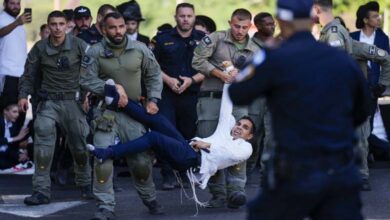Unexploded ordnance: a silent terror haunts Gaza after the war
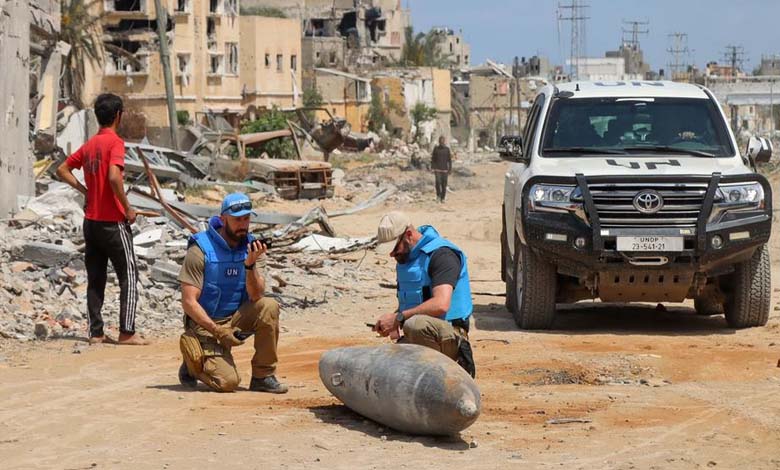
Ma’in Al-Hattou stares in horror at a shell still lodged in the ruins of his destroyed home in Gaza. The projectile pierced the walls but did not detonate, leaving him in a constant state of fear that it might explode at any moment.
Amid the rubble, tons of unexploded ordnance left behind by Israeli bombardments continue, two years after the war, to pose a permanent threat to residents—especially to children.
Footage filmed by Agence France-Presse in Gaza shows smiling children playing near unexploded bombs and missiles. Many of these devices remain fully capable of killing or causing serious injury.
Beside a hospital bed, Mohammed Nour sits next to his two children, whose bodies are largely covered with bandages after being severely wounded by remnants of war explosives.
“We were setting up tents,” Mohammed recounts. “The children went to gather wood, plastic, and cardboard to start a fire. They were about ten meters away when suddenly they were thrown into the air—each one in a different direction.”
The two boys now lie silently in their hospital beds, dazed and traumatized.
“They were just playing”
Nearby, six-year-old Yahya lies motionless with his eyes closed after being struck by an unexploded shell near Al-Shifa Hospital. The boy, almost entirely covered in bandages, lost his right hand in the blast.
His grandfather, sitting beside him and gently stroking his hair, says: “The remnants of the Israeli bombs exploded near the house. They’re children—what was their fault? They were just playing, and suddenly there was an explosion.”
The NGO Handicap International warns that unexploded ordnance poses “enormous risks,” noting that Israel has dropped nearly 70,000 tons of explosives on Gaza since the start of the war.
In January, the United Nations Mine Action Service estimated that “5 to 10 percent” of the munitions dropped on Gaza by Israel failed to explode.
Fighting continued even after that estimate, with the Israeli army dropping new bombs—including after the ceasefire with Hamas came into effect on October 10.
Jonathan Cricks, spokesperson for UNICEF in the Palestinian territories, stated that “it is extremely difficult to obtain accurate figures on the number of children injured or killed by such ordnance.”
He added: “After the latest ceasefire, we recorded reports of at least eight children seriously injured by explosive remnants of war, particularly in Gaza City.” UNICEF is currently conducting awareness campaigns to inform local communities of the dangers.
“To whom can I complain?”
Gazing at the one-ton bomb embedded between his home’s shattered walls, Ma’in Al-Hattou pleads: “I just want this missile removed so I can cover my house with tarpaulin and live in it again.”
He adds, frustrated: “I went to civil defense, but they said it wasn’t their responsibility. I went to the municipality, and they said the same thing. Where do I go? To whom do I complain?”
Shortly after the ceasefire, the UN Mine Action Service told AFP that requests for technical expertise had “increased sharply” and that the agency had been called upon for “a wide range of humanitarian operations.”
In this context, the United Kingdom announced on Thursday a donation of four million pounds to support efforts to clear mines and unexploded ordnance in Gaza, thereby facilitating the delivery of humanitarian aid across the enclave.
However, the Israeli army has not yet permitted the entry of any demining equipment into the Gaza Strip.


